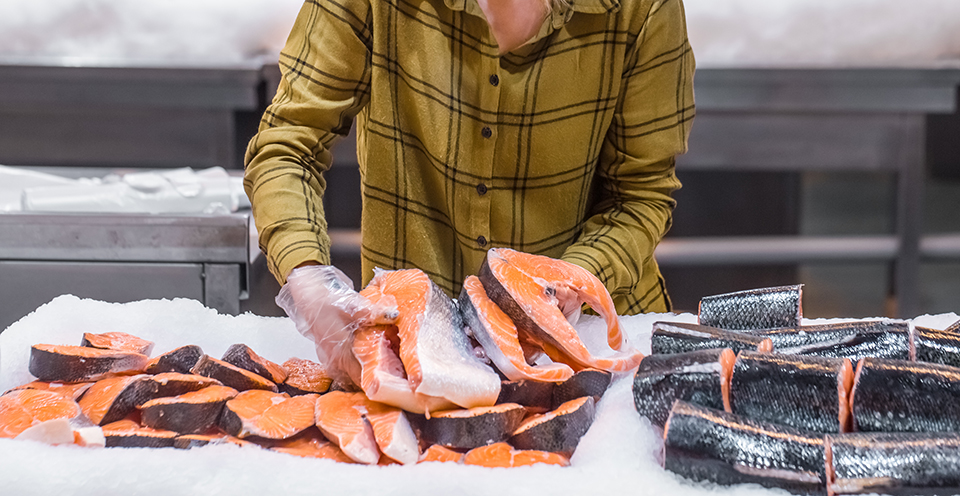Seafood inflation in grocery stores across the United States has been sky-high in recent months, and new data shows shoppers are buying less as a result.
Fifty-six percent of nearly 1,500 shoppers surveyed in early August 2022 said they noticed increases on meat and seafood prices throughout the past month, according to FMI-The Food Institute’s fifth edition of the U.S. Grocery Shopper Trends 2022 series, focused on the country's annual back-to-school drive.
Seafood prices spiked up 16.8 percent in July versus a year ago, data and tech firm Numerator told SeafoodSource. Frozen seafood grocery prices soared 14.4 percent in July versus a year ago.
Overall food prices rose 14.4 percent in comparison to the same month in 2021, FMI noted, meaning the price of seafood is rising faster than the grocery segment as a whole. Numerators reported the average U.S. shopper's weekly spend total was $136.00 in July 2022, a $12.00 decline compared to February 2022.
“This is partially a seasonal effect, with consumers eating out more during summer months, but it also indicates belt-tightening behaviors,” FMI said.
Sixty-one percent of Americans are concerned about grocery inflation – an increase of eight percentage points since February 2022, according to FMI.
As a result of rising prices, 21 percent of shoppers have reduced the amount of fresh meat and seafood they are buying, while 15 percent said they are buying more frozen meat and seafood and 12 percent are buying more canned meat and seafood.
Shoppers are reacting to rising food prices by looking for deals (49 percent), buying more store brands (41 percent), purchasing fewer items (37 percent), buying in bulk (23 percent), and leaning on store loyalty programs (22 percent), FMI found.
Consumer worries about rising prices focus on essential items, including gas (77 percent), food (72 percent), and housing (59 percent) costs. However, although shoppers say they are feeling financial strain, they said they still have enough to afford eating out (91 percent) and grocery shopping (86 percent).
This story first appeared on SeafoodSource.com and is republished here with permission.







